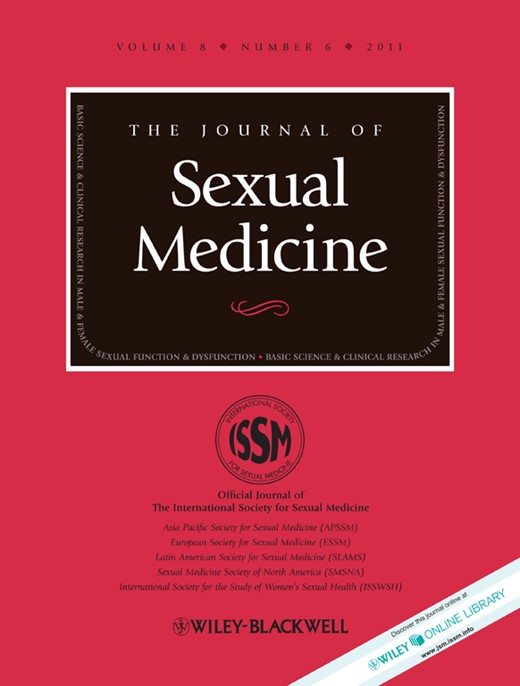-
Views
-
Cite
Cite
Nataly Escajadillo-Vargas, Edward Mezones-Holguín, Julio Castro-Castro, Wilder Córdova-Marcelo, Juan E. Blümel, Faustino R. Pérez-López, Peter Chedraui, Sexual Dysfunction Risk and Associated Factors in Young Peruvian University Women, The Journal of Sexual Medicine, Volume 8, Issue 6, June 2011, Pages 1701–1709, https://doi.org/10.1111/j.1743-6109.2011.02259.x
Close - Share Icon Share
ABSTRACT
Information regarding sexual dysfunction risk among young Latin American women is limited.
Assess female sexual dysfunction (FSD) risk and associated factors in young Peruvian university women.
This was a nested case-control study, using the Female Sexual Function Index (FSFI). Cases were defined as women with total FSFI scores at or below 26.55 (increased FSD risk). Demographic characteristics, gynecologic aspects, body mass index, mood disorders, substance abuse, and issues related to the couple, were also evaluated.
Primary end point was assessment of FSD risk and associated factors.
A total of 625 women were surveyed of which 409 (65.4%) were sexually active. The average total FSFI score was 27.2 ± 4.3. Overall, 39.9% were at higher risk for FSD. Multivariate analysis using a binary logistic regression model found that male premature ejaculation (odds ratios [OR]=2.47, 95% confidence interval [CI]: 1.27–4.77), oral emergency contraception use (OR=1.87, 95% CI: 1.04–3.38), good partner relationship (OR=0.24, 95% CI: 0.12–0.49), and length of relationship (≥3 years; OR=0.025, 95% CI: 0.013–0.05) were factors independently associated to a higher FSD risk (goodness of fit P =0.39).
In this young university female population, FSD risk was high and associated to male and female factors.





